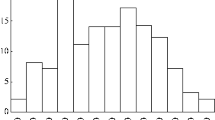Abstract
THE responses of the cercal receptors of orthopterous insects have been known for a long time. In cockroaches and crickets nerve fibres from the sense organs synapse in the last abdominal ganglion with giant fibres; in the former insect at least the system is a simple relay initiating escape responses1,2. In crickets the cerci possess a variety of mechanoreceptors and have, among others, a tactile function in song and courtship3,4. Although the brain is primarily responsible for controlling speed and duration of movement of the animal following cereal stimulation4,5, neural activity in response to such stimulation has been recorded only as far forward as the suboesophageal ganglion4.
Similar content being viewed by others
References
Pumphrey, R. J., and Rawdon-Smith, A. F., Proc. Roy. Soc., B, 121, 18 (1936); B, 122, 106 (1937).
Roeder, K. D., Smithsonian Inst. Misc. Coll., 137, 287 (1959).
Alexander, R. D., Behaviour, 17, 130 (1961).
Huber, F., in Acoustic Behaviour of Animals, edit. by Busnel, R. G., 17, 440 (Elsevier, Amsterdam, 1964).
Roeder, K. D., J. Exp. Zool., 108, 243 (1948).
Author information
Authors and Affiliations
Rights and permissions
About this article
Cite this article
DINGLE, H., Fox, S. Response to Cercal Stimulation recorded in the Cricket Brain. Nature 210, 1050–1051 (1966). https://doi.org/10.1038/2101050a0
Issue Date:
DOI: https://doi.org/10.1038/2101050a0
- Springer Nature Limited
This article is cited by
-
Regulation of insect brain excitability by ocellus
Zeitschrift f�r Vergleichende Physiologie (1969)





